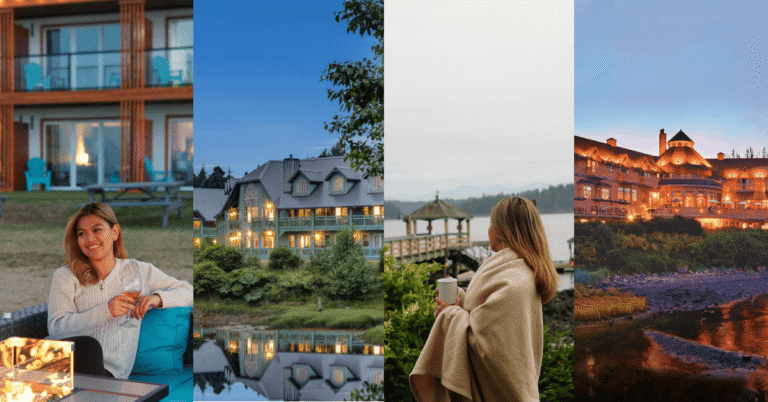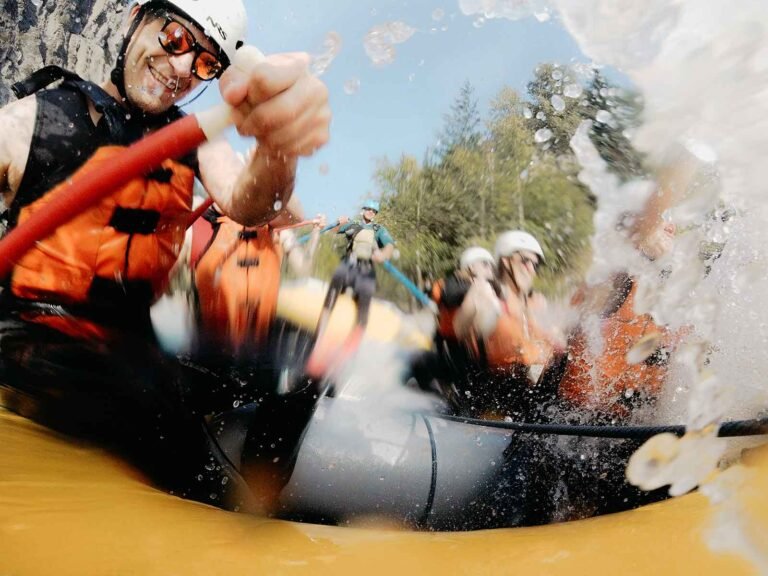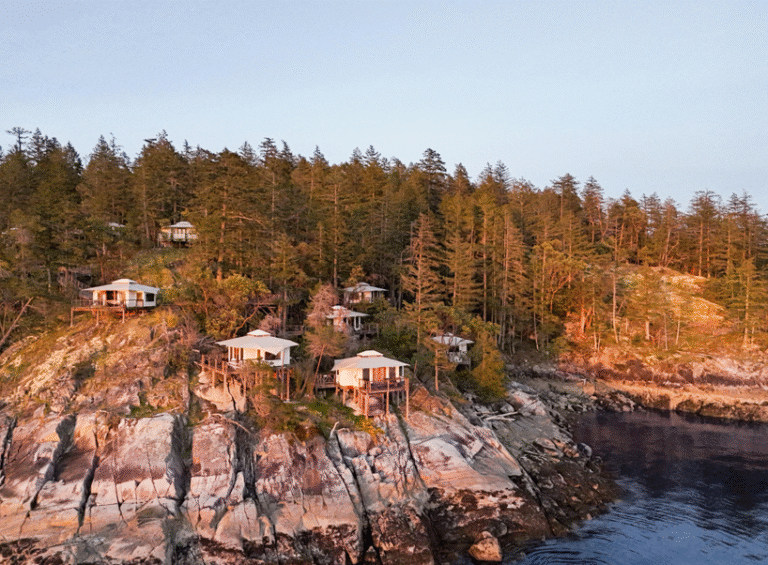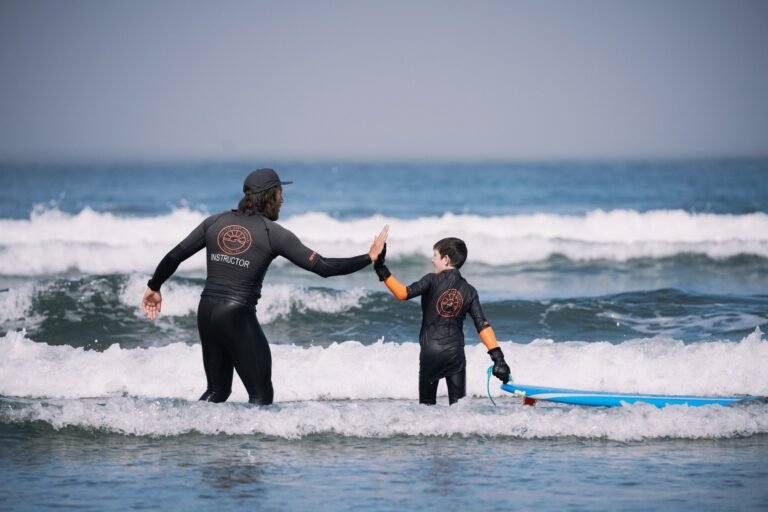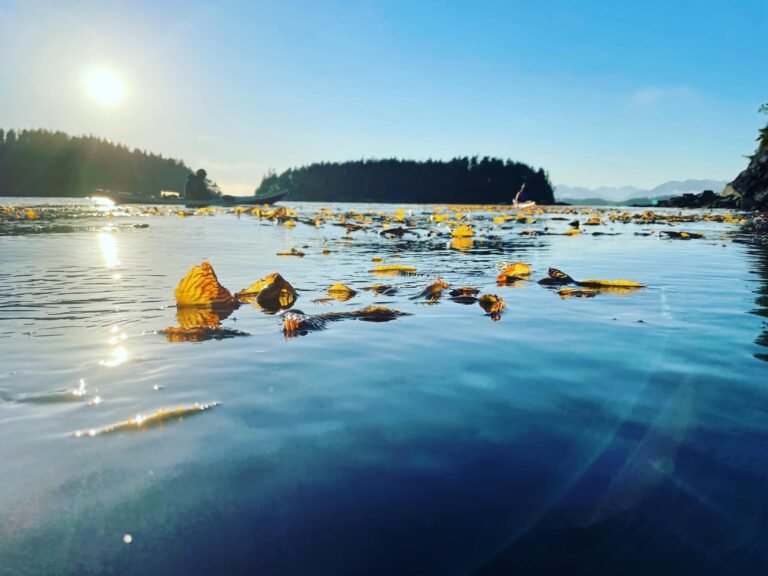For those travelling by car or bicycle, the roadways that trace the coastline of Vancouver Island wind through scenery that will take your breath away! To see the island at its best, one must take time to explore it. Several weeks could be spent on the island without exhausting the possibilities that are available. However, for those with limited time, Vancouver Island can yield many enchanting secrets – with just a little planning.
View maps of the area:
- Map of Vancouver Island
- Map of North Vancouver Island
- Map of Central Vancouver Island
- South Vancouver Island
- Map of the Pacific Rim (West Coast Vancouver Island)
- Map of Greater Victoria
- Map of Victoria
Around Victoria
Enjoy the sea air from the Pacific Ocean – drive your car, walk, rent a bicycle or go back in time and tour Victoria by horse and carriage. Relaxing sightseeing horse and carriage tours travel through downtown Victoria and along Dallas Road to Beacon Hill Park. Victoria’s largest city park has 75 hectares of beautiful flower gardens, weeping willows next to duck ponds and walking paths woven in between.
Enjoy the scenic drive along the storm-swept coastline on the edge of the great Pacific Ocean to watch the sunset or view the Olympic Mountains and Port Angeles. A recommended route is the scenic seaside tour that ends at the world-famous Butchart Gardens on the Saanich Peninsula. Follow the southeast periphery of Victoria along Dallas Road to Beach Drive and Oak Bay. This might be a good place to take high tea in quaint Oak Bay Village, or have a pub lunch while overlooking the windswept waters. Continue along Cadboro Bay Road and swing in to Mt. Douglas Park. From here visitors can get a panoramic view of Victoria from the south face of Mount Doug. Descend and continue to Royal Oak Drive and north on the Pat Bay Highway to Keating X Road. Follow this road to the west as it becomes Benvenuto Road and leads you into Butchart Gardens.
Visitors to Victoria will find the downtown core to be well planned and compact, with areas of interest such as Chinatown, the Inner Harbour and Old Town all nearby. The only hard part is picking which ones to see first. Victoria’s Chinatown is easily one of the most charming and colourful areas of the city – it bustles day and night! Discover Fan Tan Alley, the narrowest thoroughfare in Canada. For many years Fan Tan Alley was rumoured to be an entrance to an underworld of opium dens and gambling parlours, and was gated and guarded against intruders.
Start any walking tour of Victoria at the Inner Harbour and head up Government Street. This street is home to many of the oldest shops in Victoria, so note and enjoy the facades of the heritage buildings as you thread your way back in time. If you don’t make it out of the urban core, you can still savour the city’s signature welcome in the summer – over 900 flower baskets, overflowing with colour, hanging from 19th century globed lamps! Victorians can’t help themselves when it comes to stopping to smell a blooming flower – and neither should you!
There are two downtown squares in Victoria you shouldn’t miss. Historic Market Square, between Johnson and Pandora Streets, is one of the finest examples of heritage revitalization, with its market in Victoria’s Old Town. Bastion Square, near the edge of the Inner Harbour, housed Victoria’s first jail, as well as a provincial courthouse that has since become home to the Maritime Museum of British Columbia and the Vice Admiralty Court Room.
Heading North from Victoria
Had enough of poppies and petunias? Drop in on quaint Sidney, a vibrant, picturesque town that combines the charm of a small port with the rustic character of a farming community. When touring the Saanich Peninsula, branch off the highway and follow the country roads through rolling farmlands, forests and regional parks.
Just 19km north of Victoria on Hwy 1 is Goldstream Provincial Park, a nature lover’s delight that should not be missed – at any time of the year. Continue along the highway over the Malahat, stopping at roadside pullouts – sweeping vistas at the Malahat Summit are spectacular. Beyond the Malahat lies the Cowichan Valley.
For those who have flown in to the island but still want the ferry experience, rent a car in Victoria and head out to Brentwood Bay on the Saanich Peninsula. Board a Brentwood Bay – Mill Bay ferry and embark on Vancouver Island’s most beautiful shortcut across the Saanich Inlet to Mill Bay. This scenic and relaxing cruise takes just 25 minutes and gives one a delightful alternative to traveling by land. You’ll spend less time driving and more time enjoying the fresh sea air and remarkable views. Just across the highway from Mill Bay, follow Shawnigan Lake Road to Cobble Hill and Shawnigan Lake. Or from Mill Bay, you can continue north up the island or return over the Malahat to Victoria.
If you continue north, be sure to visit Duncan, home of the Quw’utsun’ Cultural & Conference Centre, the BC Forest Discovery Centre, and the world’s largest hockey stick. From Duncan, go east to charming Maple Bay and Genoa Bay. West of Duncan, explore the LLake Cowichan area on a drive around the lake, stopping at Youbou, and Honeymoon Bay. North of Duncan, visit Crofton, a forestry town renowned for saltwater fishing. The next stop is Chemainus.
Around Chemainus
Often called “The Little Town That Did”, Chemainus (Highway 1A, 77km north of Victoria) is now world famous for the series of over 40 murals depicting the area’s history that can be found on buildings and walls throughout the downtown area. This outdoor art gallery grew from a very successful revitalization project implemented when the town’s sawmill shut down in the early 1980’s. Now, almost half a million visitors a year come to view the murals and enjoy the other services that have sprung up. From Chemainus, take a ferry trip to Thetis Island – go hiking, fishing, swimming, cruising or kayaking.
A little farther north, visit the pretty little town of Ladysmith and Transfer Beach Park. From Ladysmith, you have four options. First you can drive back to Crofton where you can catch a ferry to Saltspring Island and return to Victoria/Sidney after a tour of the Southern Gulf Islands. Second, you can drive straight back to Victoria on Highway 1. Third, you can continue north on Highway 1 to Nanaimo where you can take a ferry or plane back to Vancouver. Four, from Nanaimo, you can begin a tour of Central Island and the Pacific Rim (West Coast).
Around Nanaimo
Known as the Harbour City, Nanaimo (Highway 1, 110km north of Victoria) is second only to Victoria as Vancouver Island’s largest and most vibrant city. Famous for its varied landscapes and more than two dozen parks, this city possesses one of the most beautiful waterfronts in Canada. From Nanaimo, a twenty-minute ferry ride takes you to Gabriola Island, where forested parks, quiet beaches, sensational ocean views and amazing sandstone formations await you. Alternatively, take the foot passenger ferry to Newcastle Island, a nature reserve with sandstone cliffs, forests, beaches, caves, caverns and prehistoric native middens.
Around Parksville & Qualicum Beach (Oceanside)
Basking in sunshine on the east coast of Vancouver Island, Oceanside is Beach Country, and one of the finest year-round vacation destinations in Canada. Boasting spectacular sandy beaches, coastal mountain vistas, and lush temperate forests, Oceanside incorporates the holiday communities of Parksville, Qualicum Beach, Nanoose Bay, French Creek, Arrowsmith Coombs Country, and Lighthouse Country.
With no less than seven provincial parks located within a thirty-minute drive, Oceanside provides a host of outdoor recreational activities, including hiking, camping, caving and golfing. Bordered to the east by the Strait of Georgia, Oceanside also offers every watersport imaginable, including sport fishing, canoeing, sea kayaking, diving, beachcombing, sailing, and windsurfing. Discover for yourself why so many people return again and again to this central Vancouver Island getaway.
Bordered by ocean and sheltered by mountains, Parksville is a very popular destination for summer family vacations. Mild winters allow the leisurely exploration of tidal sand flats, coastal wildlife viewing and invigorating golf year-round. The central location of Parksville makes this oceanside playground a convenient base from which to enjoy all your vacation activities on Vancouver Island.
Like its close neighbour, Parksville, Qualicum Beach is steeped in quaint British heritage. Famous for its local arts, crafts and beautiful English gardens, modern day Qualicum Beach offers visitors the same gentle countryside and golden, seemingly endless, sandy beaches. Pause here at any of the numerous beachside pullouts and smell the salt air intermingled with the perfume from the many private and public floral displays.
The rural community of Nanoose Bay is a vacation paradise and hot spot for golfers, clam diggers and water sport enthusiasts. Nanoose Bay enjoys a country atmosphere while being close to the city amenities of Parksville and Nanaimo. The peninsula’s large, protected harbour is a popular destination for visiting boats from around the world, and is home to an assortment of marinas. Located just north of Nanoose Bay, Rathtrevor Beach is one of the most popular seaside campgrounds on the Strait.
The bustling marine community of French Creek is located beside the open water of the Strait of Georgia. French Creek’s working harbour is home to a large commercial fishing fleet and many charter operations that can take visitors fishing, sightseeing, and diving. French Creek Marina offers sheltered moorage and yachting amenities for sailboats and pleasure craft.
Almost anywhere along this stretch of coast, just 10 km north of Qualicum Beach, gaze out across the Strait of Georgia and you’ll see the Sisters Island Lighthouse at the south and Chrome Island Lighthouse in the north. Lighthouse Country is located across from Denman and Hornby Islands, incorporating the small communities of Horne Lake, Qualicum Bay, Bowser and Deep Bay. Rich in history, folklore and Native culture, Lighthouse Country offers its many visitors a genuinely friendly welcome and a fabulous vacation destination in a charming rural atmosphere.
Located in the Arrowsmith Coombs Country region of Oceanside, Coombs is a popular stopping point for tourists on the way to Tofino, Ucluelet and the Pacific Rim Park on the west coast of Vancouver Island. The little village of Coombs is dotted with several heritage buildings, small gift and craft shops, antique stores, and is known for the family of goats nimbly grazing on the grass rooftop of the Coombs Old Country Market. Just one kilometre past Coombs Country Market on Highway 4A, Butterfly World features a walk among hundreds of colourful, exotic, free-flying butterflies. (Open seven days a week; March through October)
In the shadow of Vancouver Island’s mountain spine, the tiny village of Errington was named after a small village in England’s Northumberland County. Now home to an eclectic assortment of farmers, artists and craftspeople, Errington is also the gateway to the Englishman River Falls in the magnificent Englishman River Falls Provincial Park. These beautiful waterfalls are surrounded by a forest of Douglas fir and are easily accessible by walking trails. The lower falls end in a deep pool – perfect for a refreshing summer dip and viewing spawning salmin in the fall. Well maintained sites and friendly staff make this a great place to camp or picnic.
Oceanside offers six golf courses in the neighbourhood, and over a dozen courses within an hour’s drive. Qualicum Beach has three courses; Eaglecrest Golf Club, Pheasant Glen Golf Resort, and Qualicum Beach Memorial Golf Club. Fairwinds Golf and Country Club is situated near Schooner Cove in Nanoose Bay, Parksville has the Morningstar Golf Club, and Arrowsmith Golf & Country Club is located north of Qualicum Beach.
Provincial Parks in Oceanside include Englishman River Falls Provincial Park near Errington, Rathtrevor Beach Provincial Park in Parksville, Little Qualicum Falls Provincial Park and MacMillan Provincial Park alongside Highway 4 to Tofino, Spider Lake Provincial Park and Horne Lake Caves Provincial Park north of Qualicum Beach, and Rosewall Creek Provincial Park near Deep Bay in Lighthouse Country.
With Oceanside’s central location, it’s easy to take adventage of nearby recreation opportunities. Whether you choose to stroll Nanaimo’s Harbourside Walkway, ski Mt. Washington, or go whale watching off the Island’s West Coast, Oceanside is the ideal spot to launch your Island adventures.
West of Victoria
When you follow Hwy 14 west of Victoria to explore the Western Communities, Sooke is the last stop before heading into the lush rainforest of the west coast. Hugging the Sooke Harbour, Basin and Inlet, this quite community offers a scenic escape for Victoria’s residents and visitors alike.
Beyond Sooke, Hwy 14 continues on to Port Renfrew. Salty surf crashing on the beach announces your arrival at the Pacific Rim National Park, the famous West Coast Trail and Botanical Beach Park (Juan de Fuca Park). Though 70km from Victoria, this journey beyond Sooke is worth it for an encounter with the untamed wilderness of Vancouver Island.
To the West
The trip out to the Pacific Rim National Park, along Highway 4 passed Port Alberni, is a wonderfully scenic drive through mountains, forests and lakesides. The drive from Victoria to Tofino ranks among the top three drives in Canada, according to the Michelin North America Road Atlas. The 337-km trip takes the traveller through Nanaimo, Parksville, Port Alberni and Ucluelet. Visit the pretty fishing village of Tofino at the tip of Esowista Peninsula near the entrance to Clayoquot Sound, and the village of Ucluelet on the northern edge of Barkley Sound. Between these two communities is the well-known Long Beach unit of the Pacific Rim.
Around Courtenay
The town of Courtenay (Highway 19A, 60 km north of Qualicum Beach) is the urban centre of the Comox Valley, and has a long and rich heritage.
Join a studio or garden tour, or browse contemporary art galleries, craft shops and craft fairs that promote the talents of local artists, many of whom are known internationally. This is the centre of the Comox Valley area, and a good place to start your travels through the region.
Ferries depart regularly from the Buckley Bay terminal, just south of Courtenay, for the ten-minute trip to Denman Island. Stroll down a country lane, bask in the unspoiled countryside of woods and wildflowers or explore hidden coves along the sunny coastline. From Denman Island, cross to nearby Hornby Island, with its gorgeous white sandy beaches – go hiking, kayaking, cycling or scuba diving.
Around Campbell River
Historically renowned as the “Salmon Capital of the World,” Campbell River (Highway 19, 50km north of Courtenay) is beautifully set between Strathcona Provincial Park to the west and the Discovery Islands to the east. Strathcona not only has the highest mountain on the Island, but also boasts the highest waterfall in Canada. From Campbell River, take a ferry trip to Quathiaski Cove on Quadra Island – known for its scuba diving and salmon and freshwater fishing. From Quadra Island, a forty-five minute ferry ride will land you on Cortes Island. Cortes has its own distinctive charm… island isolation, sandy beaches, beautiful coves and bays, as well as a variety of things to do.
Around Sayward and Port McNeill
Born from volcanic rock, the rugged North Island region features a largely uninhabited wilderness of forests, lakes and snow-capped peaks – a unique, natural paradise.
Located in the Sayward Valley, the small coastal settlement of Sayward on Kelsey Bay is a natural playgrond with unbelievable opportunities for exploration and recreation. Be sure to visit the unusual Cable Cookhouse, a steel-framed building wrapped with 2,700 metres of wire cable weighing 26 tons, located on the east side of the one-lane bridge on Sayward Road that crosses the Salmon River. And, don’t miss the The Logger’s Totem, built in 1986 by Glen Duncan to honour the logger.
Telegraph Cove is tucked away on the eastern coast of Northern Vancouver Island, 30 minutes south of Port McNeill and 11 kilometers off the Island Highway. The tiny town is a major destination during the summer months, when the snug little bay bustles with boaters, anglers, campers, kayakers and whale-watchers. Telegraph Cove is the gateway to Robson Bight Provincial Park, an ecological reserve – up to 200 Orcas arrive each summer to rub on the barnacle-encrusted rocks at the mouth of the Tsitika River. With its colourful buildings and peaceful inlet setting, Telegraph Cove, one of the last boardwalk communities of eastern Vancouver Island, is worth a visit even if you’re not planning to do any offshore exploring.
The sheltered harbour of Port McNeill is home to many that work in the surrounding forests and out on the channels between Vancouver Island and the mainland. Dense forest, tranquil lakes, exquisite views of Broughton Strait, and plent of wildlife make this a popular destination for outdoor enthusiasts. Just north of this quiet seaside port lies the world’s largest burl. Taken from an ancient spruce tree, this burl weighs over 20 tonnes and measures more than 12 metres around.
From Port McNeill, take the forty-five minute BC Ferries trip to the bustling little village of Alert Bay on Cormorant Island. The U’mista Cultural Centre should top your list in Alert Bay. View elaborately carved cedar masks depicting the Potlatch ceremony of the Kwakwaka’wakw People. This first-rate museum and cultural showcase is a must-see for anyone interested in Northwest Coast art and culture. The Cultural Centre is dedicated to forging links between the Kwakwaka’wakw past, present and future. Above all, a casual stroll from one end of the community to the other instills one with an appreciation for the efforts of the early pioneers who carved themselves a place to live and work, and created the roots of the village that now exists on the South shore of Cormorant Island.
Your next stop should be Sointula on Malcolm Island. From Alert Bay, take the twenty-five minute ferry ride to the quiet little fishing village of Sointula. Sointula, which means ‘place of harmony’ was founded by Finnish settlers in an idealistic attempt to create a utopian colony almost a century ago. Stroll around the community to see the sights – capture the unique essence, before taking the return ferry to Port McNeill.
Around Port Hardy
Port Hardy (Highway 19, 50km north of Port McNeill) takes its name from Vice-Admiral Sir Thomas Masterman Hardy of the Royal Navy. As captain of the H.M.S. Victory, he held the dying Lord Nelson in his arms during the battle of Trafalgar. Like many towns of northern Vancouver Island, Port Hardy remains a logging, mining and fishing centre, although it is recognized as the “Gateway to the North Island” – a popular departure point for outdoor enthusiasts heading out into the wilderness.
From Port Hardy, explore the stunning beauty of the mid-cost area on the Discovery Coast Passage, the BC Ferries route from Port Hardy to Bella Coola. Or enjoy the scenic grandeur on one of the world’s most awe-inspiring voyages – take the 15-hour BC Ferries trip from Port Hardy to Prince Rupert through the Inside Passage.


